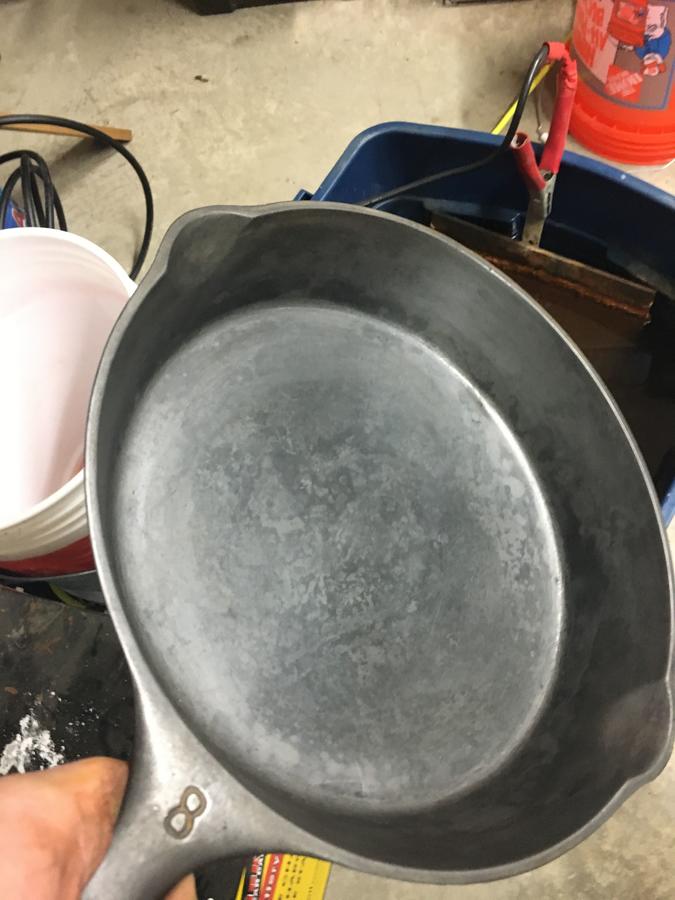Thanks Jason and Dan. Now I understand...it's basically corrosion/rusting in reverse:
Rusting liberates electrons from the pan to oxidize Fe to Fe2+, the electrons are used to reduce O2 and water to hydroxide ions (OH-) which then combine with the pan's iron ions to form iron oxide--rust. So if electrons leave the pan to rust it, the pan is positive. Jason, if you were to put the positive terminal on the pan, and potentially supply 10's of amperes of current, you would greatly accelerate normal rusting, a bad thing.
So this electrolysis is rusting-in-reverse, requiring a negative terminal on the pan. It's actually moving Fe from the rust molecules (even if hidden under years of cooking gunk) back onto the metal surface of the pan, healing it so to speak, while liberating water. Pretty cool!
Although it might be more scientifically elegant to do this than grinding, sanding, acid etching, or otherwise removing the iron oxide to get to the base metal, then again CI pans are pretty sturdy so they can afford to lose a little material.
I learn a lot on this forum! :-)







